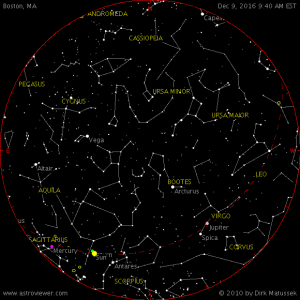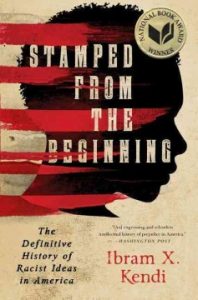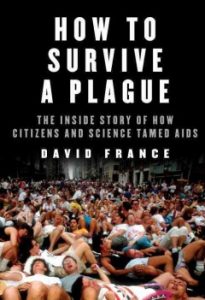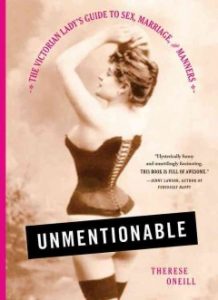
The days are growing shorter and chillier, dear readers, and I know for many of you, that can make life tough.
I lived in London for a while, as I’ve said too many times already here. And it was beautiful. London is a city that is awake and dancing and thriving at all hours of the day. And the result is that there are a lot of lights on all the time. And while it’s great that there is always a place to get a sandwich or see a film or some such…the number of lights really inhibit the number of stars that you can see. It wasn’t a fact I particularly minded, since there was so much else to see, but I vividly remember coming home for the holidays and being stunned at the number of stars in the sky over my house. Having grown so used to comparatively blank sky, just seeing all those little fiery balls of gas and space debris twinkling down through the frosty night air was magical.
So I thought today I’d share this post from Harvard’s Center for Astrophysics with you today–it show all the amazing things you can see in the dark this month: At mid-month, it will be possible to see all four planets of the inner Solar System near the western horizon as darkness falls (if you count the Earth, upon which you are standing….). And, if you squint, you’ll be able to see Neptune! Neptune! A planet that will be 2.7 billion miles away when it peeks out next to the Moon.
So I hope, that in the midst of the winter darkness, you’ll be able to look up and see some stars, dear readers…or even some planets. And I hope they bring you light.
And now, on to the books! This week, we have had a perfect storm of terrific non-fiction books drifting onto our shelves, so get ready for a fully factual Five Book Friday!

 Stamped From the Beginning: As we reported here, Ibram X. Kendi’s book won the National Book Award for non-fiction this year, which was only the latest in a series of awards and accolades for this stunning and thoroughly researched book. Writing in direct opposition to the notion that America is a “post-racial”, “color-blind” society, Kendi uses the lives of five major American intellectuals to offer a window into the contentious debates between assimilationists and segregationists, as well as between anti-racists and racists: from Cotton Mather to Thomas Jefferson, from William Lloyd Garrison to W.E.B. DuBois, as well as Angela Davis, this book holds that racism in America is not the result of ignorance or hatred, but that racist ideas were created and popularized in order to defend deeply entrenched discriminatory policies that protected those in power. This is by no means an easy read, but Xendi also shows that while racist ideas are easily formed and consumed, they can also be discredited, and a better world built, lending hope to what often feels like a hopeless situation. Kirkus gave this book a starred review, and also named it a “Best History Book of 2016”, saying “In this tour de force, Kendi explores the history of racist ideas—and their connection with racist practices—across American history. Racism is the enduring scar on the American consciousness. In this ambitious, magisterial book, Kendi reveals just how deep that scar cuts and why it endures, its barely subcutaneous pain still able to flare.”
Stamped From the Beginning: As we reported here, Ibram X. Kendi’s book won the National Book Award for non-fiction this year, which was only the latest in a series of awards and accolades for this stunning and thoroughly researched book. Writing in direct opposition to the notion that America is a “post-racial”, “color-blind” society, Kendi uses the lives of five major American intellectuals to offer a window into the contentious debates between assimilationists and segregationists, as well as between anti-racists and racists: from Cotton Mather to Thomas Jefferson, from William Lloyd Garrison to W.E.B. DuBois, as well as Angela Davis, this book holds that racism in America is not the result of ignorance or hatred, but that racist ideas were created and popularized in order to defend deeply entrenched discriminatory policies that protected those in power. This is by no means an easy read, but Xendi also shows that while racist ideas are easily formed and consumed, they can also be discredited, and a better world built, lending hope to what often feels like a hopeless situation. Kirkus gave this book a starred review, and also named it a “Best History Book of 2016”, saying “In this tour de force, Kendi explores the history of racist ideas—and their connection with racist practices—across American history. Racism is the enduring scar on the American consciousness. In this ambitious, magisterial book, Kendi reveals just how deep that scar cuts and why it endures, its barely subcutaneous pain still able to flare.”
 How to Survive a Plague: The title of this book calls to mind thriller movies and apocalyptic warnings, but rather than science fiction, this is a real-life story about the grassroots movement that battled the AIDS epidemic of the 1980’s and 1990’s, culminating in a comprehensive treatment plan that, to date, has saved some 16 million lives. In the face of mysterious illness, torturous death, and public approbation (to put it lightly), groups like ACT UP and TAG (Treatment Action Group) that started an underground drug market to oppose the prohibitively expensive…and often deadly…AZT treatments available, educated millions around the world, and forced reform in the nation’s top disease-fighting agencies. David France brings first-hand knowledge and comprehensive oral testimonies to this book, opening up a terrifying and incredibly moving period of American history that, because so many involved did not live, has gone largely undiscussed today. Again, this is a difficult book to read, but also a deeply necessary one, because it shows human resilience and determination, even in the face of the most overwhelming opposition. The New York Times named this one of their Notable Books of the Year, and Newsday praised it as “Flawless. Masterfully written, impeccably researched, and full of feeling for the living and dead heroes of the AIDS movement… There can be no clearer picture of the uphill battle against ignorance and bigotry… No better person to write this book, which had to be written, creating a complete and correct record of this terrible story and its heroes.”
How to Survive a Plague: The title of this book calls to mind thriller movies and apocalyptic warnings, but rather than science fiction, this is a real-life story about the grassroots movement that battled the AIDS epidemic of the 1980’s and 1990’s, culminating in a comprehensive treatment plan that, to date, has saved some 16 million lives. In the face of mysterious illness, torturous death, and public approbation (to put it lightly), groups like ACT UP and TAG (Treatment Action Group) that started an underground drug market to oppose the prohibitively expensive…and often deadly…AZT treatments available, educated millions around the world, and forced reform in the nation’s top disease-fighting agencies. David France brings first-hand knowledge and comprehensive oral testimonies to this book, opening up a terrifying and incredibly moving period of American history that, because so many involved did not live, has gone largely undiscussed today. Again, this is a difficult book to read, but also a deeply necessary one, because it shows human resilience and determination, even in the face of the most overwhelming opposition. The New York Times named this one of their Notable Books of the Year, and Newsday praised it as “Flawless. Masterfully written, impeccably researched, and full of feeling for the living and dead heroes of the AIDS movement… There can be no clearer picture of the uphill battle against ignorance and bigotry… No better person to write this book, which had to be written, creating a complete and correct record of this terrible story and its heroes.”
 Unmentionable : The Victorian Ladys Guide To Sex Marriage And Manners: For all that we fawn over the pretty costumes and romantic ideals of bygone eras, the reality, especially for women, was really quite different…and painful….and degrading….and, occasionally, utterly ridiculous. In this brazenly funny, quick-paced, and marvelously well-researched book, Therese Oneill brings all the unsavory, absurd, and totally quirky tips, tricks, hints, guides, and advertisements aimed at women in the 19th century; everything from diet to beauty, from courtship and marriage to hygiene and medicine, this book will make you think about history in a much more personal way–and will no doubt provide plenty to think about in considering what we do to and think about ourselves today. The Editors of Library Journal made this book one of their top picks, calling it “A down-and-dirty perusal of the realities of hygiene and womanhood in the Victorian era. The truth behind slimming corsets, virtuous nuptials, and strict morals is sometimes shocking, occasionally alarming, but always funny with Oneill’s wry commentary.”
Unmentionable : The Victorian Ladys Guide To Sex Marriage And Manners: For all that we fawn over the pretty costumes and romantic ideals of bygone eras, the reality, especially for women, was really quite different…and painful….and degrading….and, occasionally, utterly ridiculous. In this brazenly funny, quick-paced, and marvelously well-researched book, Therese Oneill brings all the unsavory, absurd, and totally quirky tips, tricks, hints, guides, and advertisements aimed at women in the 19th century; everything from diet to beauty, from courtship and marriage to hygiene and medicine, this book will make you think about history in a much more personal way–and will no doubt provide plenty to think about in considering what we do to and think about ourselves today. The Editors of Library Journal made this book one of their top picks, calling it “A down-and-dirty perusal of the realities of hygiene and womanhood in the Victorian era. The truth behind slimming corsets, virtuous nuptials, and strict morals is sometimes shocking, occasionally alarming, but always funny with Oneill’s wry commentary.”
 The Wood for the Trees: One Man’s Long View of Nature: A few years ago, award-winning scientist Richard Fortey purchased four acres of woodland in the Chiltern Hills of Oxfordshire, England. This book the tale of what he found there, and how a forest changed his life. Each chapter in this charming and wonder-filled book covers a month in Fortey’s year, detailing his moth hunting and wood-cutting, the friends he made, and the new paths he as his roots pushed deeper and deeper into his new home, and he realized just how much live four acres could contain. The result is a funny, sometime snarky, but always interesting work that focuses deeply–and emotionally–on place and its meaning in our lives. The New York Times Review of Books loved this book, calling it “Fascinating…vivid…striking…an immensely detailed portrait of the flora and fauna contained in four acres…Fortey creates an astounding portrait of multilayered life in one relatively restricted space, reviving the great tradition of natural history…[and] conveys unforgettably the staggering variety and abundance of the whole natural world.”
The Wood for the Trees: One Man’s Long View of Nature: A few years ago, award-winning scientist Richard Fortey purchased four acres of woodland in the Chiltern Hills of Oxfordshire, England. This book the tale of what he found there, and how a forest changed his life. Each chapter in this charming and wonder-filled book covers a month in Fortey’s year, detailing his moth hunting and wood-cutting, the friends he made, and the new paths he as his roots pushed deeper and deeper into his new home, and he realized just how much live four acres could contain. The result is a funny, sometime snarky, but always interesting work that focuses deeply–and emotionally–on place and its meaning in our lives. The New York Times Review of Books loved this book, calling it “Fascinating…vivid…striking…an immensely detailed portrait of the flora and fauna contained in four acres…Fortey creates an astounding portrait of multilayered life in one relatively restricted space, reviving the great tradition of natural history…[and] conveys unforgettably the staggering variety and abundance of the whole natural world.”
 Butter Celebrates!: Last week, we showcased a book on the history of butter, and this week, we are highlighting a new cookbook by Rosie Daykin, owner of Butter Baked Goods in Vancouver. Just in case you needed some more butter in your life. And who doesn’t, honestly? Filled with over 100 recipes that are perfect for any holiday or festivity you may be planning, this is one of those books that make you hungry just looking through its stunning pages…..So very, very hungry……
Butter Celebrates!: Last week, we showcased a book on the history of butter, and this week, we are highlighting a new cookbook by Rosie Daykin, owner of Butter Baked Goods in Vancouver. Just in case you needed some more butter in your life. And who doesn’t, honestly? Filled with over 100 recipes that are perfect for any holiday or festivity you may be planning, this is one of those books that make you hungry just looking through its stunning pages…..So very, very hungry……
Until next week, beloved patrons–happy reading!
